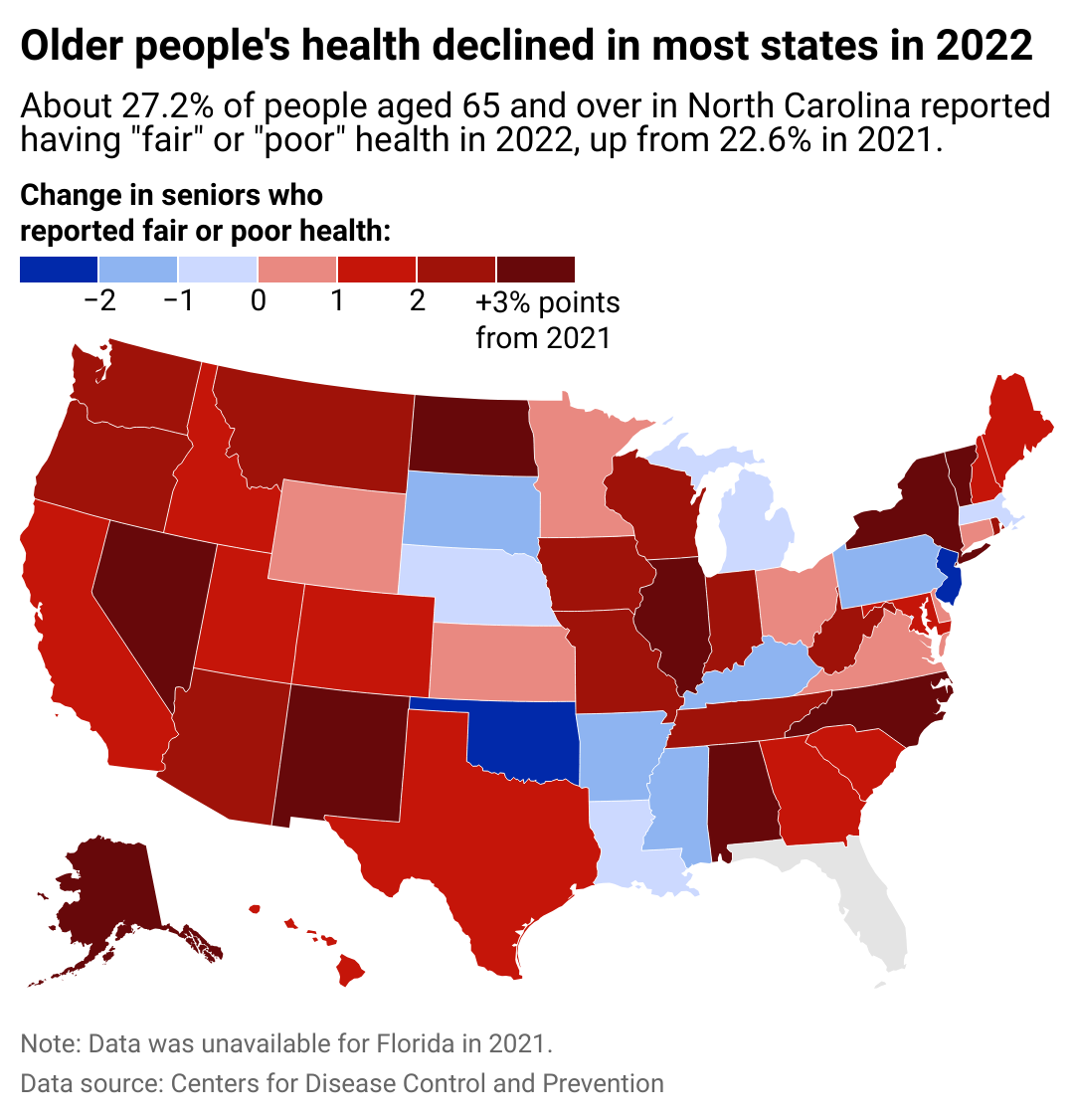
States where older people's health is seeing the biggest decline
This story originally appeared on Northwell Health and was produced and distributed in partnership with Stacker Studio.
States where older people's health is seeing the biggest decline
Older people across the U.S. say their health declined between 2021 and 2022, according to the Centers for Disease Control and Prevention.
Americans 65 and older in 34 states reported higher rates of "fair" or "poor" health when interviewed as part of the CDC's Behavioral Risk Factor Surveillance System survey, so Northwell Health partnered with Stacker to see which states have seen the biggest declines.
The population of adults over age 65 in the U.S. has experienced extraordinary growth. They are more diverse, work longer, and are more educated than previous generations. Still, they also face serious challenges beyond even that caused by the COVID-19 pandemic, which lowered life expectancy by about 2.5 years between 2019 and 2021.
The rising cost of living, the opioid crisis, the affordable housing shortage, and access to care all hurt the health of older people.
More than 11 million older people spent more than 30% of their income on housing, utilities, taxes, and insurance in 2021, according to a Harvard Joint Center for Housing Studies report. That qualifies them as cost burdened, a distinction the Department of Housing and Urban Development uses to gauge whether housing is affordable. That number jumped significantly from the 9.6 million who fell into that category in 2016.
Increasing housing costs means instead of older people using money on prescription medications and health treatment, it goes to rent. Without those medications, the conditions a person faces may not be properly treated. Older adults on diabetes medication who do not buy the medication they need to maintain their insulin levels can experience serious issues such as blindness, amputation, and death.
Opioid deaths in the older population increased as well, quadrupling between 2002 and 2021, researchers from the Stanford University School of Medicine and the David Geffen School of Medicine at the University of California, Los Angeles reported. The Drugs and Aging Journal found that one of the health hazards of opioid misuse led to an increase in falls, which could affect the ability to walk and move freely.
"Older adults who lose their mobility are less likely to remain living at home; have higher rates of disease, disability, hospitalization, and death; and have poorer quality of life," according to the National Institute on Aging.
Older people usually have at least one chronic health condition, such as heart disease, diabetes, or cancer, the Department of Health and Human Services reports. Still, older adults can face trouble accessing health care, whether because they live in a rural area, can't drive themselves, or because of high out-of-pocket costs.
But the way older people feel about their health isn't universal.

Factors in the decline in most states
It's hard to say why older people in certain states rated their health worse in 2022 compared with the year before. New Jersey, for instance, saw the demographic report better health, which tracks with a U.S. News & World Report ranking the state's health care system as #8 in the nation. However, that list ranks Hawaii as #1 for health care, while older people there reported a decline in their health.
Nationwide, states are grappling with how to help this population, which the Census Bureau projects a 47% growth by 2050. In Maine, a new pilot program aims to use $2.5 million in federal funds to help connect aging residents with resources they need to stay in their homes. Tennessee created the Direct Support Professionals Apprenticeship Program, which increases pay for on-the-job training for workers in fields such as long-term care. And Vermont created the Old Vermonters Act, a wide-ranging measure to make living in the state friendlier for aging adults.
Story editing by Ashleigh Graf and Kelly Glass. Copy editing by Paris Close.



